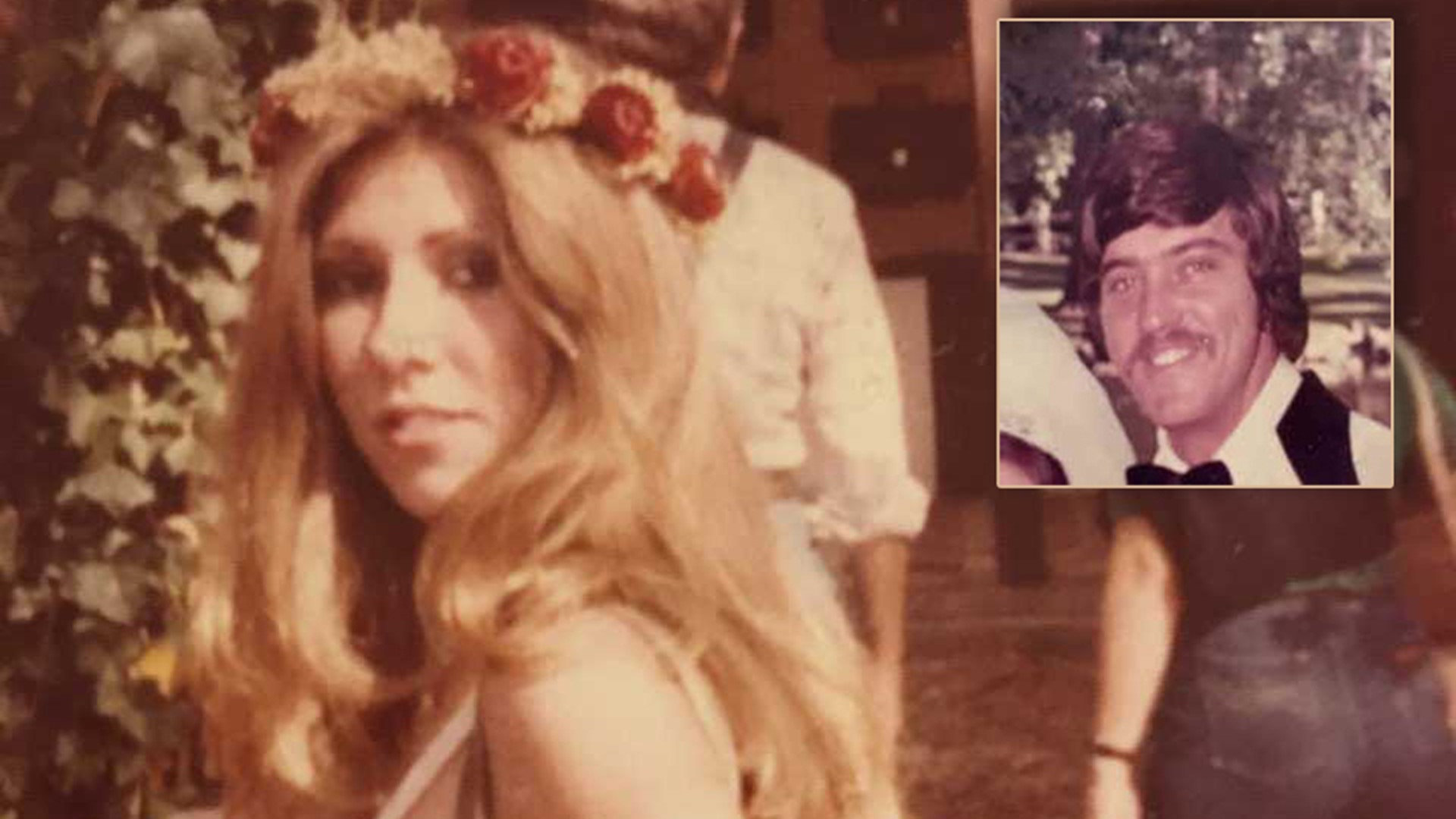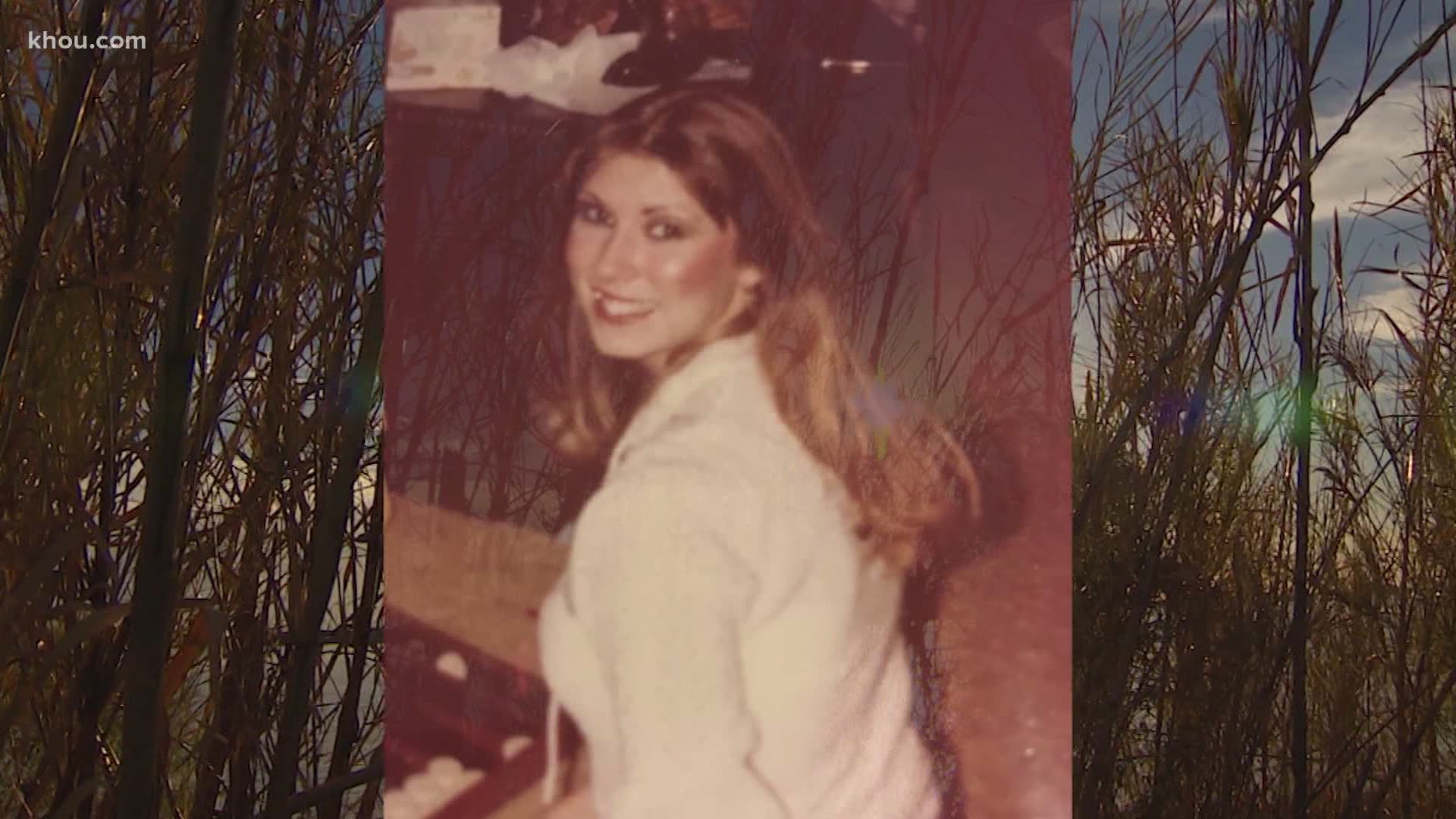Missing Pieces: How a 1983 Seabrook woman's murder case was cracked decades later
Police believe Arthur Raymond Davis killed Susan Eads in 1983. He died in a car wreck just months after her death.

Just beyond this scenic shore is a mystery, waiting to be solved.
“You try to get those missing pieces of the puzzle to try to paint the picture of what happened," said Dennis Eads, Susan's brother.
Susan Eads was murdered in 1983 and her family always wondered, what happened?
“We have put all kinds of scenarios together for 35 years," said Eads.
He is the oldest of Susan’s four siblings, always carrying the burden of finding out what happened to his little sister who he remembers as beautiful, funny, and full of gumption.
“I don't know how things would have turned out later in life, but she didn’t take any crap from anyone," he said.
So why was Susan murdered and how could it happen in a sleepy sea-side town?
The Podcast
A new podcast out Monday, October 5 dives into how a Houston-area cold case was cracked using forensic genealogy. It features the 1983 murder of Susan Eads, interviews with the team of investigators and KHOU 11's Grace White, who has followed the case for years on her Missing Pieces series. Download True Crime Chronicles for free wherever you listen.
The Original Investigation
“It was just unusual for that to happen in a place like Seabrook,” said Sgt. Will Haskett, Seabrook Police Department.
Sgt. Haskett says Susan’s murder puzzled police. For the town outside of Houston and nestled around NASA, there was plenty of nightlife. Dive bars dotted NASA Road One, where 20-year-old Susan worked as a waitress and DJ.
“For nobody to know anything, to have decent information on it, it was just strange to me," said Sgt. Haskett.
Susan’s 1976 Chevy Monte Carlo was found near the crime scene. She was strangled to death. The murder weapon was a piece of her own clothing. She was sexually assaulted, but nothing was stolen.
“Where her body was found was a vacant field, it was next to some sort of boat store," said he said.
But then police got a sketch of a mystery man known as “Cowboy.” An employee came forward from Jason’s Club, where Susan was last seen on the summer night of August 30.
“They described a person they didn’t recognize in the bar that night asked Susan Eads to dance and talked to her a couple of times that night," said Sgt. Haskett.
But investigators still didn’t know the Cowboy’s real name or who was making mysterious phone calls. Susan’s mom started getting the calls after the murder.
Mother: You said you knew Susan?
Caller: Yes
Mother: Well, I still can’t believe I never knew of you. I don’t understand that.
Police thought it could be Susan’s killer.
Caller: Some people have secrets they like to keep to themselves.
Mother: You have some pictures of her, you told me? I’d like to see ‘em.
Caller: Just you. I’m not going to show them to anyone else.
But every time, before police could trace the calls, he would always hang up.
Mother: Would you want me to meet you somewhere?
Caller: My place or a motel, or something like that.
The Serial Killer Connection
The calls eventually faded, but not the memory for Susan’s brother. In fact, it prompted him to start researching a serial killer named Anthony Shore.
“I was sure the way everything lined up. He could make the phone calls. He had everything," said Eads.
Shore worked for a local telephone company and his dad worked with Susan’s sister at NASA. He was known as the tourniquet killer and remember Susan was strangled. But it wasn’t until he was in prison, with an execution date looming her family would get their questions answered.
“Anthony was very inquisitive as to why we were there. He quickly figured out that we were there about the Susan Eads case,” said Brandon Bess, a Texas Ranger.
Shore’s execution was temporarily put on hold, so Ranger Bess could interview him on death row.
“Shore was a very odd individual who confessed to the crimes that he had committed, again, to us, as well as a number of other crimes, including between 50 and 100 sexual assaults that he said he committed that he was never captured for in the Houston area," said Bess.
But Shore was adamant, Susan was not one of his victims.
“Shore told us that the four homicides that he committed were the only homicides that he committed. Shaw said, I'm a serial rapist. That's what I did. And when a date rape drug came on the scene. He said, I didn't have to kill women anymore."
Just to be sure, the Rangers collected Shore's DNA before he was executed, and it wasn’t a match.
The Search for New Clues
Ranger Bess went back to Seabrook, back to the police department, and back to dust off boxes of evidence that hadn’t been opened in decades.
“It's like in the movies when you open that box up and there's the treasure, you found the treasure. When we open those boxes up and will and I are looking at those boxes, there was the treasure chest. We had found it," said Bess.
They found the murder weapon, Susan’s bodysuit, the killer turned into a tourniquet.
“The body suit was black and color, which is going to make things a lot more difficult," said Amanda Balasko, a Forensic Scientist.
Difficult because darker clothing makes it harder to see. But what two forensic scientists found inside the Texas D.P.S. crime lab would break Susan’s cold case wide open.
“It's definitely exciting, especially because this is this evidence is from the 1980s," said Balasko. “To have this stain and to have it on this item was very promising."
The stain made by sperm would provide enough DNA to develop a profile for a male suspect.
“It's why we do what we do and it's why the scientists get into this and why I've stuck with it all of these years is to answer these questions and hopefully bring some answers to families," said Tanya Dean, Forensic DNA Specialist.
But the forensic team still didn’t have a name. So, they began working with genealogists to comb through online ancestry profiles to find his family.
“And they would find somebody, and send the known sample to me," said Dean. "We were able to eliminate that branch of that family tree."
Those branches of the suspect’s family tree spanned across the United States. That’s where the F.B.I. comes in, finding and interviewing potential relatives of the suspect.
“I think it’s really important for the public to understand the use of this technique and even when we achieve results through this technique, the matches or hits we get through genealogy are not proof of any crime. They are simply an investigative lead for us to follow up on," said Glenn Gregory, F.B.I. Special Agent.
The Cowboy's Real Name
Finally, one of those leads gave the Cowboy a name. Investigators identified him as Arthur Raymond Davis, 35. He was a fishing boat captain and Vietnam veteran. In a strange twist, Davis was killed less than a mile from where Susan was murdered.
“He died as a result of injuries sustained in a serious car accident. He was actually hospitalized for an entire month and passed away in January of 1984," said Gregory.
That was just a few months after Susan’s death. Much of Davis’ life, even how he knew Susan is still a mystery. But there is something strange, remember those mysterious phone calls Susan’s mom got after the murder? They continued after Davis’ death. So, who was behind them? We may never know.


“The thing about this case that was so sad for me was she was at the prime of her life, she was young, by all accounts she was so happy, and it just seemed so unfair," said Samantha Knecht, with the Harris County District Attorney's Office.
But she says the similarities between the sketch and the actual suspect are striking.
“When you see it in this case and you see just how spot on the witnesses were with that drawing, it really gives you confidence going forward and looking at other cases where you do have a sketch that you know what, it is possible to find a suspect and compare and say, this is it, this is him," said Knecht.
She’s convinced they have the right guy.
“I felt confident in the results of the DNA and all the scientific evidence to be able to draw the conclusion that they did in fact have the right person, so we were able to close the case out," she said.
Remembering Susan
After almost four decades, in a cemetery not far from Seabook...
“We talked about it coming out here but I don’t think the emotion actually hit us of what today is going to be like,” said Ranger Bess.
One by one, the team of investigators placed bright coral roses on Susan’s grave with her family.
“It’s hard to put into words, we’ve been down so many roads but an incredible effort, but some amazing people made today possible," said Eads.
Along with a brother who never gave up on his sister. A reminder, cold cases can be solved no matter how long it’s been.
“The science that is changing from what they had in 1983 to what we have available to us and what we have available in 2-3 years from now. It should be promising to those folks, it should bring renewed hope to those families to never give up," said Ranger Bess.


